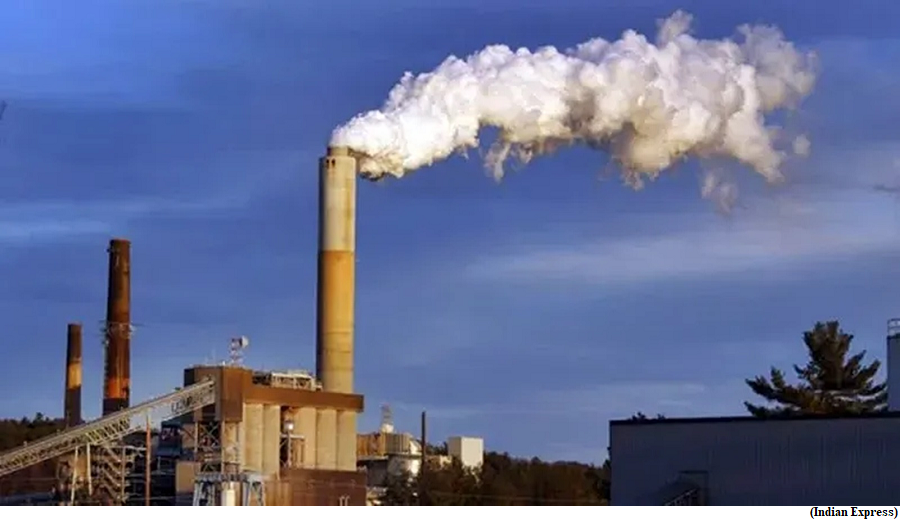The green credit strategy, potential and pitfalls (GS Paper 3, Environment)

Context:
- At the 28th annual Conference of Parties (COP28) in Dubai, Indian Prime Minister emphasised the principle of climate justice and an equitable carbon budget, critical for the developing world.
- At the same time, he presented an idea on the global stage that could work as a practical solution to many challenges i.e. green credits.
Incentives for environmental actions:
- They provide incentives for environmental actions such as biodiversity conservation by people and communities that go beyond the narrower objective of greenhouse gas mitigation.
- While actions that promote sustainability should ideally be voluntary and all-pervasive, it isn’t so because all actions involve costs that might be hard to bear, especially for people and communities in the developing world. Green credits incentivise such actions by putting a value, beyond the carbon price, on such actions. So, afforestation supported by this scheme will not just lead to enhanced carbon sinks that were the focus of monoculture plantations promoted under the Clean Development Mechanism (CDM) the world over, but will incentivise endemic forests where biodiversity can thrive.
- To be clear, green credits focus only on non-carbon benefits, as the carbon mitigation benefits are already covered by carbon markets. The initiative essentially aligns the climate change discourse with the sustainable development discourse.
Incentivise adaptation actions:
- The scheme could be used to incentivise adaptation actions, which will be revolutionary. For long, the focus of climate action has been emissions mitigation and not increasing the adaptive capabilities of countries.
- While PM Modi mentioned carbon sinks along with green credits, such a scheme can incentivise a host of actions beyond the forest sector.
- For example, the Government of India is already planning to use such an incentive scheme to enhance water conservation and air pollution mitigation actions.
Why is this critical?
- Climate impacts are already being experienced across sectors, be it water, agriculture, or forests. But getting private finance for adaptation measures is hard as private capital needs financial returns, mostly possible in the technology-intensive mitigation domain.
- Green credits could provide much-needed capital for adaptation as it will look beyond the carbon value of actions. Rich, thriving biodiversity, incentivised through these credits, also means more climate-resilient ecosystems.
International climate finance:
- The green credits would open another channel of international climate finance for both mitigation and adaptation actions. The last two decades have shown that carbon credits and markets have been an effective instrument for international finance flows.
- China’s wind power projects, for example, benefitted immensely from the United Nations’ carbon market. International climate finance is critical both from the responsibility perspective, as the climate change problem has been the making of the developed world, as well as from the operational perspective as adequate supply of finance at reasonable terms has been the biggest bottleneck for scaling up and speeding climate mitigation and adaptation efforts.
- The G20 New Delhi Leaders’ Declaration highlights that the developing world needs $5.8-5.9 trillion by 2030 to meet its Nationally Determined Contribution (NDC) targets.
- Green credits could open up a parallel channel for international climate finance in addition to the carbon markets, especially if they can be traded across borders.
Challenges:
Measurement of green credits:
- While measuring carbon is relatively straightforward, quantifying aspects like biodiversity conservation is much more challenging.
- How can we measure and compare biodiversity-related green credits across geographies as varied as the Amazon and the Himalayas?
- For some other sectors, say water conservation, this could be simpler as one has to measure only the quantity of water conserved based on an intervention.
Ensuring adequate demand:
- The green credit initiative is currently a market-based instrument. This means that there is a demand side and a supply side. On the supply side, one can establish measurement and verification protocols to issue credits.
- Companies in the developed world can buy green credits that represent mitigation actions in African rainforests, or adaptation actions to conserve biodiversity in the Indian Himalayas.
- While that would be a great start for demand creation, can the UN establish a system where the developed world can invest in green actions in the developing world in a compliance framework similar to the carbon markets under Article 6 of the Paris Agreement?
Price discovery for the different types of green credits:
- Low prices mean little incentive for green actions. Price discovery for green credits could be challenging because it is difficult to establish fungibility between diverse credits that measure different environmental benefits.
- For example, green credits from biodiversity conservation and water conservation may not be directly comparable with each other as these are not fungible.
- If fungibility cannot be established, it might imply that we have separate green credit exchanges dealing with different credit varieties, with their own unique demand-supply chains and price discovery based on buyer preferences and supply cost.
- Green credits currently are unlike a carbon market where all carbon credits saved from all kinds of intervention across sectors are equal.
Way Forward:
- There’s no denying that the potential of green credits is immense when these challenges are addressed. Countries such as Mozambique, Sweden and UAE have already welcomed the idea.
- India’s initiative isn’t just about sustainability; it’s a way to turn eco-friendly aspirations into tangible actions, planting the seeds for a greener future worldwide.


